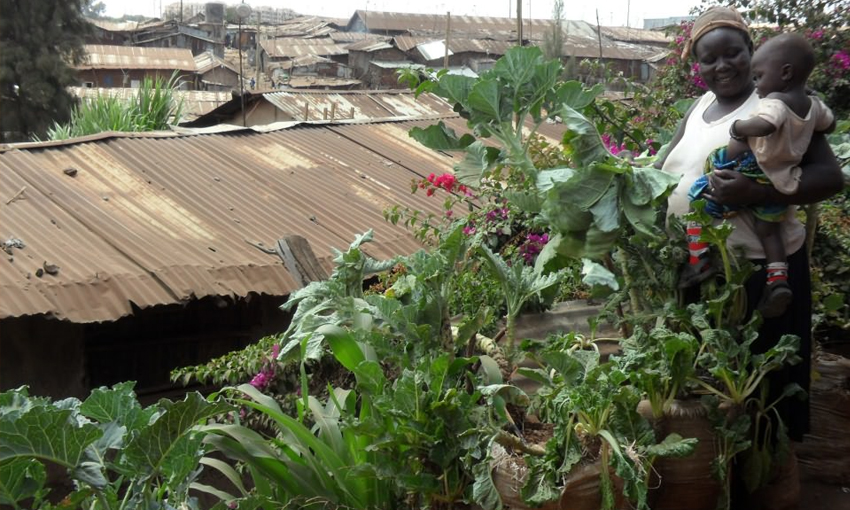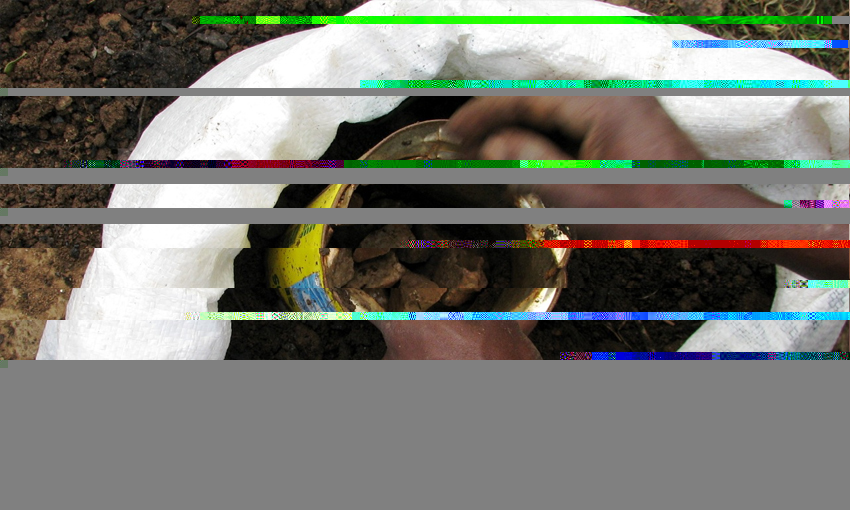The slums of Nairobi house more than 60 percent of the population; Kibera slum being the second biggest. Agricultural land remains scarce and in December 2007, due to post-election violence, food prices rose by 50% in six months. The French relief, ‘NGO Solidarités’ began to tackle this issue with the “garden in a sack” project.
6000 families were given sacks filled with earth, which by the end of the pilot-project were producing tomatoes, onions, kales or spinach. A nursery was established in the slum to supply the initial seedlings while a group was assembled to train the project’s beneficiaries. Each supplied sack had a volume of 1 m3 or a farmable surface area of 5 m2, which had the potential to contain 50 kale or spinach seedlings and 20 tomatoes plants. On average, it was estimated that each household increased its weekly income by 5.00 US$ (in comparison to the rent of a house which is valued at approximately 6.00 US$ a month.
SOURCE: http://www.solidarites.org/ & http://www.ruaf.org/sites/default/files/UAM21%20p.38-40.pdf
EDITOR’S NOTE: The “garden in a sack” concept is ideal for areas which have limited access to space, open ground and funding. The sack, which utilizes height whilst retaining moisture is extremely space and water efficient as well as low in cost. The power of this micro-intervention is directly related to the scale of the population who take advantage of the resource (soil) made available by exerting energy on their part to transport the soil and to produce vegetables. Obstacles to this operation include funding, the problems associated with relocating the heavy earth-filled sack home, the access to seeds and seedlings and the access to healthy, nutrient-rich soil.








